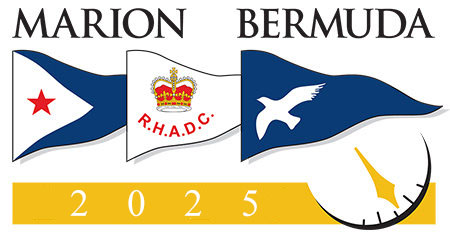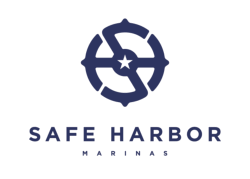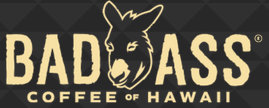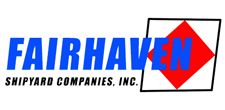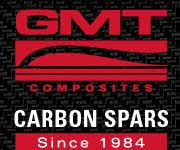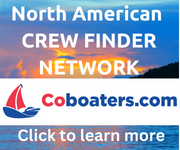REGISTRATION
- When can I register for the 2025 Race?
- What is the entry and crew fee for Academy boats (i.e. Mass Maritime, Coast Guard Academy, Naval Academy, Maine Maritime, etc)?
ELIGIBILITY
- Can you help me understand the measurement requirements?
- In past races World Sailing Group 3 competitors were banned from the race; has this changed?
- Does an entrant need an ORR and IRC rating?
- What defines a Category 3 sailor?
- Are Category 3 sailors allowed to participate as Skippers/Crew in the Marion Bermuda Race?
- What type of qualifications does the Captain and the crew require to be in the Marion Bermuda Race?
INSURANCE
BOAT PREPARATION
- How do I start preparing and fitting out the boat for the Marion Bermuda Race?
- Should I use the copilot program?
ATTIRE
TRAVEL, ACCOMMODATIONS
- What sort of transportation is there to Marion, Massachusetts?
- How far is Boston Logan from Marion? How about TF Green airport?
- What hotels do you recommend in the Marion area?
- What hotels do you recommend in Bermuda?
- Are there rental cars available in Bermuda? How do we get around the island?
INSPECTIONS and EQUIPMENT
- How do I set up an inspection?
- Do I need a SSB radio?
- Will Coast Guard approved signaling devices be allowed.
- How do I satisfy emergency navigation lights?
- What is the requirement for stanchions?
- Are crotch straps required for PFD?
- Are USCG Type I PFD’s required?
- What is the role of the Compliance Committee?
- Can I use a large roach headsail, tweener or Code 0?
- Do floorboards need to be tied down?
SCORING
- What is Performance Curve Scoring?
- What types of time adjustments has the Compliance Committee made in prior races?
When can I register for the 2025 Race?
Registration is scheduled to open on July 1, 2024 with discounted entrance fees available through December 15, 2024.
Academy boats pay 1/2 the entry fee.
Can you help me understand the measurement requirements?
One of our most frequently asked questions is, "How do I get my boat measured and what measurements need to be taken?" To answer this, it’s important to understand what the measurements are going to be used for. If we ran the Marion - Bermuda Race only for Hinckley Pilot 35 yachts, measuring would be a simpler matter, but we don’t. We have to have a handicapping system that will equitably accommodate a wide variety of yachts of different sizes, ages, displacements and other characteristics in order to produce a fair list of "corrected" finish times.
Every measurement system has as its heart a rigorous computational core. That core needs enough data about the yacht to do a good job, and that’s where the first challenge comes in. A perfect measurement system would have such a gigantic appetite for physical measurement data of the yacht that it would be unacceptably cumbersome, expensive and time-consuming. Only the most fanatic racing owners would consider that choice.
Two systems, ORR and IRC, are popular today because they require just enough physical measuring to do a quite acceptable job of handicapping. The yacht’s measurements are input into computers at US SAILING or The Royal Ocean Racing Club (RORC) in the UK where they are used to build a computer model of the yacht, which results in a set of handicap numbers.
The 2023 Marion - Bermuda Cruising Yacht Race will be sailed under the ORR handicap rules.
ORR (Offshore Racing Rule)
ORR is the new version of AMERICAP II. When a new yacht is built, either a custom design or the first of a production model, a measurer takes the actual hull lines or the designer supplies the lines and a measurer makes spot checks to verify the as built dimensions. This data is used to construct a virtual hull. Next, Sail, Rig and Propeller measurements are taken and input. Then, with the yacht afloat and in measurement trim (no sails, life raft, fresh water, bedding, etc. aboard) the Floatation and Inclination measurements are taken. Freeboard measurements are taken at the forward, aft, port and starboard freeboard measurement points. These points were determined when the hull was measured. These measurements give us displacement of the yacht in measurement trim.
After that, the Inclination measurement is taken by placing a predetermined set of weights at the end of a spinnaker pole set at the sheer of the yacht at maximum beam with the pole perpendicular to the fore and aft centerline of the yacht. It must be calm with no wave action when these measurements are taken. The amount of heel is recorded for each configuration of weights and is used to produce the hydrostatics of the yacht, such as righting moment, limit of positive stability, and stability index. The yacht’s measurements are now complete.
Now for the good news: If your yacht has or has had an AMERICAP II or an IMS certificate, it is quite likely that the certificate can be transferred to ORR with no additional measuring required unless there are new sails. There are two versions of ORR, Full and Partial. (based on a sistership) Full requires Rig, Sails Prop, Freeboard and Inclination Measurements whereas Partial does not. Although MBCYR permits the Partial ORR, you may wish to have the Freeboards done to get a more accurate displacement number. If your yacht does not have an existing certificate, it is very likely that there is a sister ship in the hull file database at US SAILING that can be used to produce a certificate for your yacht. If you have a custom yacht that hasn’t been measured and you’re only intending to race the Marion - Bermuda, it has been our experience that if your yacht’s naval architect can provide the Table of Offsets (the Lines) and the Hydrostatics of your yacht, then US SAILING will provide a Provisional Certificate for the Race.
The first step in all this, particularly if you do not have an IMS or AMERICAP II certificate, is to contact the Offshore Office at US SAILING, (401) 683-0800, or [email protected]. You can find out much more about these rules, download applications, and look at the already-measured yacht classes on their web site.
Our important suggestion: Begin a telephone dialog with the Offshore Office personnel at US SAILING soon, even if you’re just considering racing. You don’t have to commit to getting rated. Describe your yacht to them and after two phone calls you’ll know if getting your yacht rated is going to be smooth or bumpy. Then you’ll have a much better idea about how much time and effort the rest of the process will require. If you tell them that you have a 1974 Hinckley Pilot 35, you can have a rating in a day or so; if you tell them you just bought a replica of "Kon-Tiki" and it’s currently on its way back from Polynesia, you’re in for a substantially longer haul.
We encourage you to get the process started as soon as possible. The offshore office is involved in many races year-round and is particularly busy each spring.
In past races ISAF Group 3 competitors were banned from the race; has this changed?
Yes, it has changed as there is no specific exclusion based on World Sailing group designations. The race is open to all Classifications that are fully in keeping with the Spirit of the Race. However, the Notice of Race contains several requirements that modify the "Yes."
Does an entrant need an ORR and IRC rating?
An entrant must have an ORR rating. An IRC rating is not required and will not be used.
What defines a Category 3 sailor?
According to World Sailing Sailors Classification Code 2.3, Category 3 includes those who (a) have been paid for (i) competing in a race, (ii) training, practicing, tuning, testing, maintaining or otherwise preparing a boat, its crew, sails or equipment for racing, and then competed on that boat, or in a team competition, in a boat of the same team; or (b) have been paid $US2,000 or more for allowing his or her name or likeness to be used in connection with his or her sailing performance, sail racing results or sailing reputation, for the advertising or promotion of any product or service; or (c) has publicly identified himself or herself as a Group 3 competitor or as professional racing sailor.
Are Category 3 sailors allowed to participate as Skippers/Crew in the Marion Bermuda Race?
The race is open to all World Sailing Group Classifications (Categories 1-3) that are fully in keeping with the Spirit of the Race. Skippers will be required to list the Category 3 sailors in their crew by name, and certify that they meet the "cruising friends" criteria and are not being paid. Skippers who abuse the Corinthian spirit of Race will face disqualification.
What type of qualifications does the Captain and the crew require to be in the Marion Bermuda Race?
The captain and crew qualifications are one of the two main areas with which our Acceptance Committee is concerned. Can the captain and the crew effectively and safely get to Bermuda and back? Secondly, can the boat safely go to Bermuda and back? Regarding the Captain and crew qualifications, our Acceptance Committee looks at the detailed experience of the captain and navigator. We may also look at the watch captains and crew, if there is any doubt. We take the invitation to enter the Race seriously - with safety as our major concern. That being said, we have had many first time racers take advantage of the help before the Race and the company of many boats on the same course to Bermuda. We suggest you read the “Skipper and Crew” Section of the NOR and if there are any questions and concerns to not hesitate to contact us.
What do I need to do regarding insurance for my sail boat when entering the Race?
You should check specifically with your insurance carrier and make sure that you have the necessary coverage to undertake an US Sailing Ocean Race to Bermuda. A yacht’s insurance policy in most cases is only valid for specific sailing areas and under specific conditions unless a rider is obtained from the owner’s yacht insurance company. In some cases, the insurance company requires a limited surveyor’s inspection be undertaken and provided to them, prior to issuing the rider to enter an international Ocean race to Bermuda.
How do I start preparing and fitting out the boat for the Marion Bermuda Race?
We would suggest that you initially do the following in late summer or fall prior to the Race:
- Carefully read the Notice of Race
- Read the Safety Requirements Monohull or multihull Safety Requirements Multihulls. Consider each point carefully as they relate to your boat. If any requirements seem unclear or onerous reference them in an email to [email protected].
These steps will very quickly give you an idea if your yacht is presently ready to enter the Race and what if any modifications might be required for the Yacht to be race ready. Both Inspections and Co-Pilot groups are there to help smooth your Entry in the race.
Should I use the copilot program?
First, welcome to the Marion Bermuda Race... and I think you are in the right place -- we can connect you through the copilot program to several resources designed to help you feel comfortable not only during the Race but also in preparing for it. The copilot program will connect you with a skipper or racer who has done the race before. Since this is a volunteer program we try to assign a copilot carefully when there is a fairly serious level of interest based on your location and specific questions. They can help in many ways - one on one. The [email protected] email will get you started with a copilot. Look for an email response from them.
What sort of attire do we need for Marion and Bermuda events?
In Marion before the race, there are two evening dinner events. The Bermuda Reception on Wednesday night is all comfortable and casual. Thursday evening is the Crew Supper - casual and comfortable. (Shorts are fine.) In Bermuda, the most formal evening is Saturday for the Prize Giving reception and gala dinner. Jackets and ties preferred for men; sundresses, cocktail dresses, or nice slacks/jacket for women. For other evenings at the club, a collared shirt with slacks or Bermuda shorts is in order.
What sort of transportation is there to Marion, Massachusetts?
Car rentals are available at the New Bedford airport - about 20 minutes away. If you’re flying into TF Green/Providence airport, you could possibly rent a car there and drop it off at the New Bedford airport. Hertz also has an office in Wareham. Take a taxi to the Beverly Yacht Club, or call the Duty Desk and ask if there is anyone available to pick you up. We try to have volunteers on call to help out with “limo” service!
If you are flying into TF Green, here is a link to their Transportation Resources. Here is a link to Boston Logan Airport Transportation Resources.
How far is Boston Logan from Marion? How about TF Green airport?
From either airport, it’s about an hour drive. The Boston rush hour (now almost all day long) will add significant time to make the trip. Allow 2 hours to be sure. It is an expensive taxi/ Uber ride, so we would recommend renting a car and returning it at the New Bedford airport, or taking a bus from the airports. Please check with airports about buses and transfers that would get you close to Marion, perhaps to New Bedford, and THEN take a taxi - about 20 minutes over to Marion.)
What hotels do you recommend in the Marion area?
Towne Place Suites (Wareham), Fairfield Inn & Suites by Marriott (New Bedford), Hampton Inn (Fairhaven/New Bedford), The Mattapoisett Inn (B&B - Mattpoisett) and many smaller B&B’s and motels are nearby. Please support our advertising sponsors.
What hotels do you recommend in Bermuda?
It really depends on your budget and how many people you are trying to accommodate. There are some fantastic places nearby that include cooking/kitchen areas that are very affordable and good for groups and keeping expenses down - Green Bank Cottages, The Salt Kettle, Rosemont Guest Suites are some examples. The Royal Palms Hotel and The Rosedon are two very gracious, lovely mid-range boutique hotels that are near the club - breakfast and tea included. In Paget and Hamilton, some of the higher end accommodations might be The Newstead Belmont Hills (Spa facilities and golf) and the Fairmont Hamilton Princess. If being on the beach is what you prefer, expect to pay for the pink beaches - but you won’t go wrong. Head to the Southhampton area and you’ll find the Elbow Beach Hotel, the Fairmont Southhampton Princess, The Reefs and Cambridge Beaches, to name a few. A super little find down there on the less expensive side is Coco Reef Resort (formerly the Stonington Hotel). Again, please do your best to support our support our advertising sponsors.
Are there rental cars available in Bermuda? How do we get around the island?
Rental cars are now available... BUT remember you will be driving on the left side of very narrow roads that are lined with coral. Bermuda drivers are used to these conditions and drive fast and very aggressively. We recommend that you choose a different option! Your choices are:
1) The Bus System - excellent! Nice, clean air-conditioned buses that take you just about everywhere you need to go. There are different lines and many, many stops along the routes. It’s also nice to meet the most hospitable Bermudians. Don’t be surprised if extremely polite school children will give up their seats for you.
2)The Ferry System - again, outstanding and a really cool way to get a fantastic perspective on the island. Consider taking it from Hamilton to St. Georges for a great day of walking and sightseeing, or Hamilton to Dockyards for a harbor tour..
3) Taxis - these can get expensive but are sometimes necessary for transporting you to a remote restaurant for dinner.
4) Scooters/mopeds. Your most expensive (and least safe) option. Please remember that you’ll be driving on the OTHER Side of the road, with lots of rotary’s/roundabouts, and fast drivers. If you choose this option, please be safe and DO NOT drink and drive.
No. But Safety Requirements 3.13 says "a boat shall have a method of receiving weather information in addition to the fixed mount and hand held VHF radio." This could be a satphone data program, navtex, weather fax or a HF SSB receiver. Many offshore sailors still prefer to carry SSB units as they can be used to meet this requirement.
Will Coast Guard approved signaling devices be allowed.
No. Only SOLAS devices are approved for the race.
How do I satisfy emergency navigation lights?
They must be of the same power as required by the CG rules, several manufacturers now offer these in very efficient LED units. Another approach is to mount a masthead tricolor whose power could be switched to a secondary power source in an emergancy, also available in LED units.
What is the requirement for stanchions?
To be considered "suitibly strong" they must be welded to their base or through bolted to the base, and the bases similarly must be ruggedly attached.
Are crotch straps required for PFD?
Yes. Several PFD requirements are stated in Safety Requirements 3.1.1 and 3.1.2.
Are USCG Type I PFD’s required?
The requirements for PFD's have been changed slightly to include those meeting ISO as well as USCG standards. Non-inflatable alternatives are allowed but must be equipped to the standards stated in Safety Requirements 3.1.1 and 3.1.2.
If you are a US registered boat you must also carry a "USCG - approved" PFD's if your race PFD's are not marked "USCG - approved."
What is the role of the Compliance Committee?
It serves as a less severe alternative to the International Jury to adjudicate noncompliance with the rules of the race and of good seamanship in order to enhance fairness and safety. It applies penalties and credits accordingly. For instance, failing to attend or arriving late at the Skippers Meeting the day before the race start, entering the start area before your class’ warning signal and failing to check in prior to the race start, usually attract a penalty. Failure to complete, sign and turn in one’s Compliance Certificate after completing the race or withdrawing, incurs heavier penalties because of the safety implications. Keeping a comprehensive record of assisting another mariner at sea may permit a favorable time award. In future races poor or inadequate written log book records may incur penalties as this is potentially a safety issue in the event electronics are lost, or some other calamity affects you. The Compliance Committee tries to help make this an enjoyable, safe and fair race.
Depending on budget and amenities you desire, here is a great link: http://www.hotelplanner.com/Hotels/2058-NEAR-University-of-Massachusetts-Boston. The gentrified Seaport district, near the Boston Convention Center, is a fantastic area, complete with top notch hotels and nearby excellent restaurants, all within walking distance of each other and is probably only a 15 minute drive, maximum, to University of Massachusetts/Boston.
Can I use a large roach headsail, tweener or Code 0?
We’ve had many questions about large roach headsails. Beginning in 2018, ORA has been able to calculate a rating using these sails. Thus, the Notice of Race allows for large roach headsails, tweeners, and Code 0 sails that measure as spinnakers under ORA rules to be used. A yacht wishing to use one of these sails will be handicapped in the spinnaker class.
How do I set up an inspection?
Prior to the Inspection, print a paper copy of the Equipment Inspection Checklist and Safety Requirements. On the Checklist certify that your yacht meets each of the listed requirements by initialing the box in the “Skipper” column. If you have questions about any item you should contact a local Inspector or the Chief Inspector for clarification.
When you feel the boat is reasonably ready contact a local Inspector. Agree on a time and place convenient to you and the Inspector.
If an item like a Sat Phone or Life raft is being rented and can't be aboard for the Inspection, you should provide documents, letters, or emails to indicate the expected delivery.
On the agreed date, have the boats equipment laid out for easy inspection by the Inspector. The Inspector will go aboard the boat with you and review the list and initial each item in the “Inspector #1” column, if the Skipper has not initialed an item you should explain why.
Following the Inspection, the Checklist will STAY ABOARD the boat, it will be one of the required items you will present at Registration. A copy can be made for the Inspector using a camera or notes can be taken by the Inspectot.
The pre-race Inspection must be completed by June 7, 2023 (NOR 6.1). The Inspector will enter any discrepancies in the online system.
Do floorboards need to be tied down?
Yes! There are two reasons for this; one, in the event of knockdown or inversion it's clear a floorboard flying around a sleeping compartment could be lethal; secondly, in a flooding situation, a floorboard could float free exposing an unseen opening to the bilge, creating a real risk of someone stepping into it and causing injury.
There are many ways of tying floorboards down ranging from the traditional mechanical catches, or elbow catches, to the more creative 'shockcord and clip' arrangements, and more recently some very effective 3M Duel Lock and other Velcro Brand fastener systems. Your Inspector or Mentor may have more ideas for your boat.
What is Perfomance Curve Scoring?
The Marion Bermuda Race for 2023 will be scored using ORR’s Performance Curve Scoring (“PCS”). The core of PCS is a Velocity Prediction Program (“VPP”). The VPP is the program that developed your boat’s polars, available through US Sailing. ORR’s VPP-based scoring system provides a scoring model designed specifically for the Marion Bermuda Race by replicating the historic conditions of beat, reach, and run seen during a typical Marion Bermuda Race. When you apply for an ORR rating, the VPP uses the boat’s rating information (design, sails, etc.) to predict the boat’s seconds-per-mile ratings over a range of wind speeds, and to generate a corresponding curve of performance (or seconds per mile) versus wind. There are a series of ratings for each boat on the scratch sheet. The time that boats owe each other changes with wind speed. And a boat that owes time in one wind speed may be owed time in a different wind. PCS captures this by using the appropriate ratings for the complete range of slow, average and fast races. How does it do this?
As each boat finishes, the boat’s elapsed time is divided by the course distance (645 NM) to calculate the boat’s elapsed seconds per mile. The scoring program drops this figure onto the boat’s performance curve to find the average wind speed it appears the boat sailed in, often dubbed the “Implied Wind.” This is then converted to a corrected time using a scratch boat. As it turns out, the boat with the highest Implied Wind wins the race, because relative to their rating they sailed the course the fastest among their competitors. In other words, they sailed so fast it looked like they had the highest wind.
What types of time adjustments has the Compliance Committee made in prior races?
The Committee granted time credits to yachts rendering assistance. The amount of the allowance reflected the amount of time the yacht was diverted from her course while rendering assistance.
The Committee assessed the following penalties, included here as examples only:
- Sail number discrepancies - 30 minutes
- Starting Area infringement - one hour
- Failure to attend the entire Skipper's meeting - one hour
- Passing the incorrect side of a mark of the course (not including start or finish marks) - two hours
- Mid-race change from Celestial to Electronic navigation - five hours
- Pre-race equipment deficiencies not corrected - disqualification & recommended exclusion from future events

